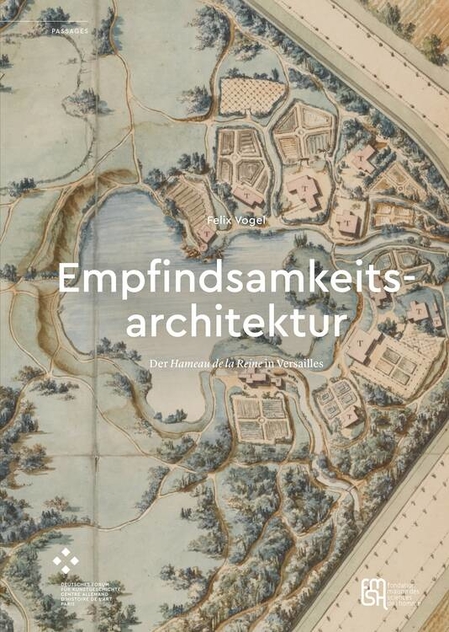Felix Vogel: Empfindsamkeitsarchitektur. Der »Hameau de la Reine« in Versailles
Commissioned by Marie-Antoinette and built between 1783 and 1789 by Richard Mique, the Hameau de la Reine is an ensemble of twelve farmhouses built around an artificial pond in the park of the Petit Trianon in Versailles. However, there is a contradiction inherent in the supposedly vernacular complex: while some of the rustic buildings were occupied by the staff working there or used for agricultural production, others were used for courtly pleasure. The exterior dirt was painted on, while the interior was partly decorated with opulent furnishings.
Using archival sources not previously considered, Felix Vogel reconstructs the history of the Hameau de la Reine 's creation, function, and use against the backdrop of the emerging epoch of Empfindsamkeit. His multifaceted study of the famous garden complex treats the objecthood of architecture, the status of bodies on display, utility as an aesthetic category, or the artificial production of naturalness as central themes that claim significance far beyond Versailles: In the Hameau de la Reine , authenticity becomes an aesthetic calculation whose traces reach into the present.
The book can be ordered from local bookstores or directly from the publisher.
An open access version is available from Éditions de la Maison des sciences de l'homme.

